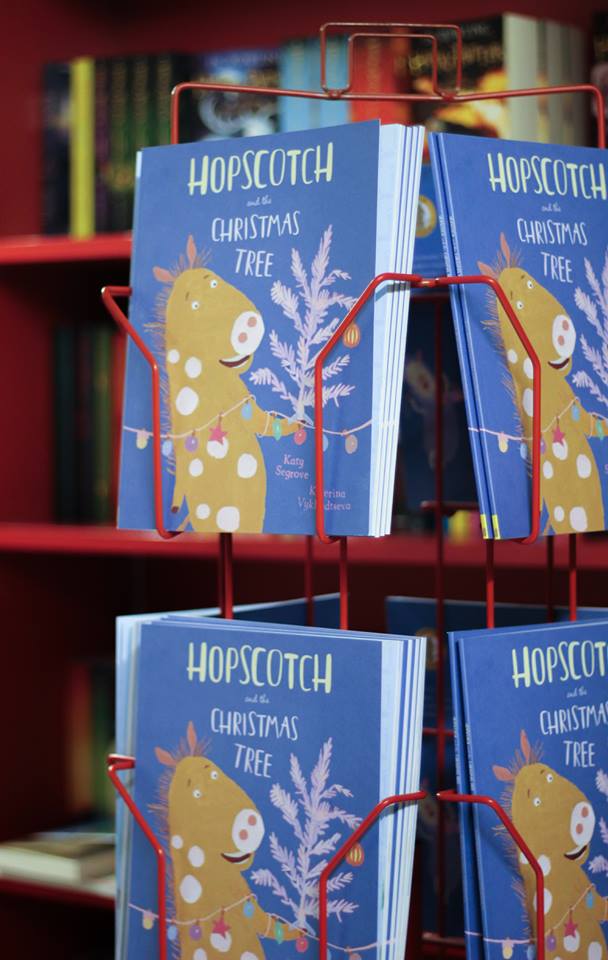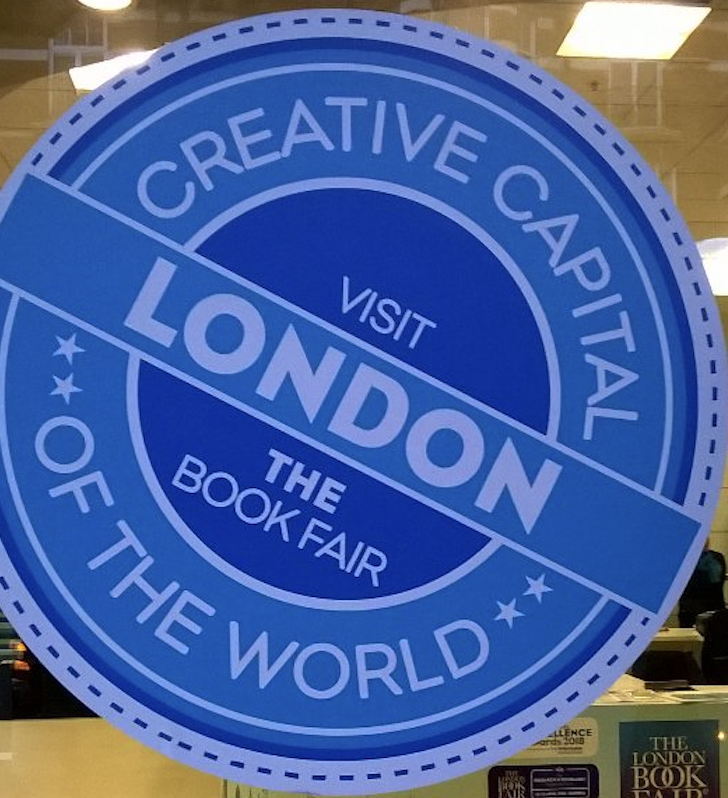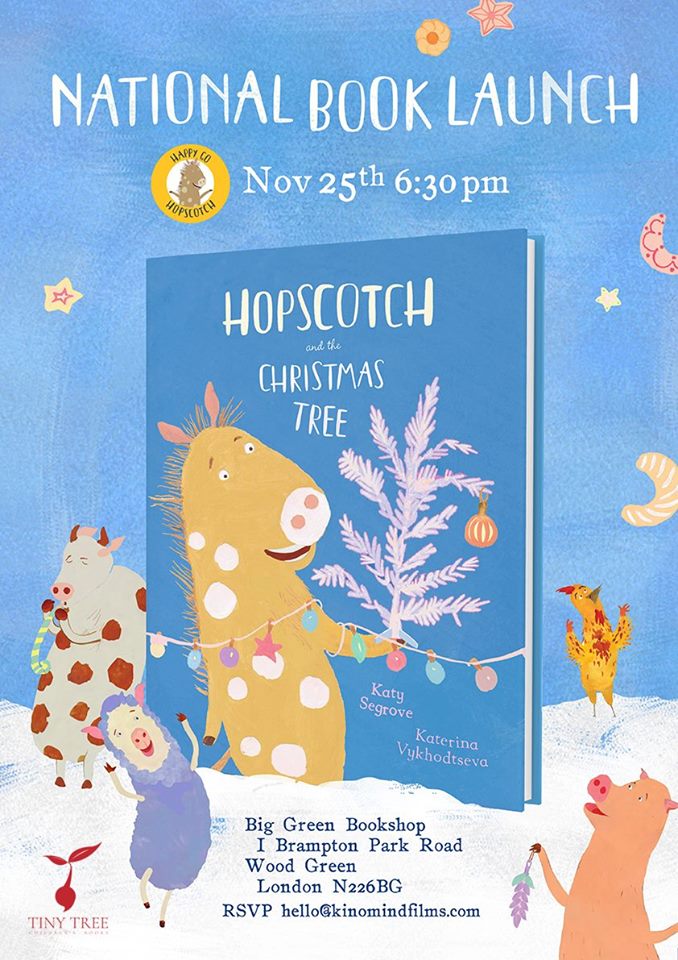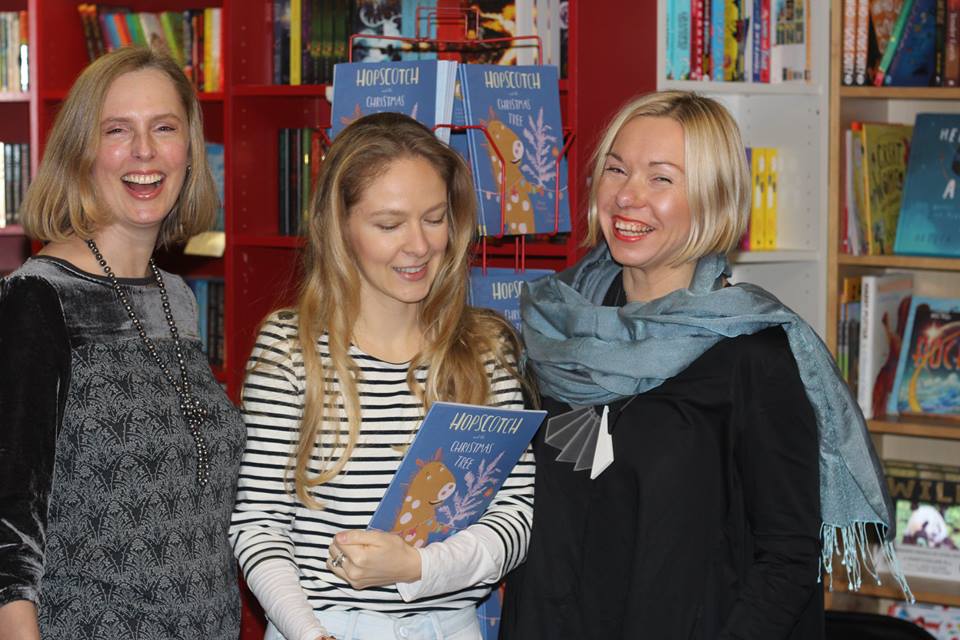Getting a Book Deal
The fourth of a 5-part series where I take you behind the scenes of the most fulfilling experience of my writing life: developing a kids’ animation series for TV.
In this instalment, I’ll tell you about writing a picture book, based on our series, meeting publishers at the London Book Fair, getting a book deal and then adapting my story for the screen.
(If you missed them, here are Parts One, Two, and Three in this series of articles.)

New Goal
After the excitement of pitching at Cartoon Forum, the team and I came back home and awaited news. It was a long wait. I kept reaching out to Inesa, the producer, looking for updates. But she always had the same response: It’s going to take weeks. Broadcasters have so many animation projects to review and consider and they don’t tend to make quick decisions straight after Cartoon Forum. We knew this already, but it still felt like an anti-climax.
I was hyped up after months of hard work, and it was weird trying to live at a slower pace of life. I didn’t know what to do with all my spare time! Luckily, thanks to Inesa’s networking, a new idea had started to brew.
Writing a Children’s Picture Book
She wanted me to write a children’s picture book, based on the series. Well, it wasn’t exactly a new idea; we had been considering this on and off since the early days of our collaboration. However, now we had more experience and a clearer plan.
Inesa had heard that we were more likely to get a commission for a one-off animated Special, in the first instance, than a whole series. And this would more likely happen if we had more content to share. But we didn’t have the funds to produce any more animation. A picture book would be much cheaper and could also bring our series to life in a different medium. So of course, I had to write one.
At first, I wasn’t sure if this was a good idea. Wouldn’t we be putting all our energies into something else (writing a book, then trying to get it published), when it was the TV series we were after? But getting a series commission was out of our control. Writing a book was within our control. This was an opportunity to create more content as well as expand our skillset, which had to be a good thing.
Meeting Alan Durant
However, I’d tried before to write a picture book, without much success. My skill and training was in writing screenplays. Picture books were a whole new medium – short, but surprisingly tricky. So, I decided to take a day-long Guardian Masterclass with picture book author, Alan Durant, which proved to be very instructive. I set to work, analysing picture book classics, and working on ideas. But nothing really stuck… After a couple of months of struggle, I noticed that Alan Durant was running another course, this time a 3-day residential workshop – so I decided to sign up.
The course was in early December in Alan’s home in Brighton. And the theme was ‘Christmas’. I was a little disappointed when I discovered this as I didn’t particularly want to write a Christmas story. But as I’d committed to the course, it made sense to throw myself into it and try out all the exercises, no matter what they were.
Coming up with an idea
And so, we spent 3 days reading picture books, doing group exercises, and spending long chunks in silence as we beavered away on our stories. For me, that meant lots of brainstorming and mind mapping. We were supposed to develop an idea for a picture book and another idea for older children. But as I desperately needed a complete text for a picture book story, I spent most of my time working on this. Luckily, I came up with an idea I liked on Day One and ran with it.
At the end of each day, we read out our work, gave each other feedback and encouragement, and had short tutorials with Alan. All in all, it was a wonderful experience. I met some lovely people, felt creatively charged up, and came away with a complete story that had potential. It was nearly there, but not quite. The ending was weak and overall, the story needed editing.
So, I hunkered down for a few more days, plugging away until a Eureka moment led me to a slightly different ending that I loved. I polished and proofread the story, then sent it off to Inesa and Katerina (the director) who were desperate to read it. Their response came back quickly. They loved it. This was the story we should go with. Hooray!
Trying to Get it Published
The question was, what should we do next? Try to get it traditionally published (ideal, but not easy)? Or do a Kickstarter campaign and self-publish it (interesting, as it would enable us to build our audience, but it would be a lot of work)? We decided to keep an open mind.
Inesa was keen to go to the Bologna Children’s Book Fair in Italy. But I wanted to be involved too, after all, I was the author. It made sense that I be actively involved in trying to get our book published.

The London Book Fair
I had a friend who’d had success at the London Book Fair (LBF), finding a publisher for her book, so I got in touch and picked her brains. She generously shared her experience, with step-by-step advice about how to approach publishers at the LBF. She also mentioned that she’d taken a friend along for moral support. So, on a whim, I reached out to another writer friend and asked if he had ever been. It turned out he’d been going every year for a long time.
Yes, the LBF is a trade fair for publishers, but there’s also a great programme of seminars for authors and aspiring authors. It’s a chance to meet and mingle, get inspired and feel like you’re part of a community. I decided to go and started contacting publishers via the wonderful LBF website.
Meanwhile, Katerina and Inesa worked on a dummy picture book for me to share. Katerina illustrated a few pages including the cover, and Inesa worked with a designer to make it look professional. This is not essential, by the way; publishers only expect to see the text and some illustrations if you happen to be the illustrator. But as we were a whole production team we felt it made sense for us to show off all our skills.
Meeting Publishers
I went along to the London Book Fair in March 2017, full of excitement and optimism. I spent 3 days soaking in the atmosphere, chatting with other writers, drinking expensive cups of coffee and attempting to network with children’s book publishers.

It wasn’t easy, but luckily I’d managed to set up 3 meetings in advance. I shared our dummy book, told them who I was, talked about our little animation company and the Happy Go Hopscotch series, and to my great delight, I got some interest.
Getting a Book Deal
A small but very friendly independent publisher, Tiny Tree Books, immediately took to ‘Hopscotch and the Christmas Tree’. They wanted to publish it and said they would be able to release it in time for Christmas that same year.
We couldn’t believe it; this was just what we wanted! In collaboration with the publisher, I did a few more edits. Then, Katerina set to work on the big task of illustrating the whole book. It was such a thrill to see it come to life, page by page.
It was finally completed around September 2017, and it looked fantastic. Holding a book in my hands was such a different experience to writing a script. I could share it far more easily with friends and family. I got such a kick out of the whole thing. Then, along with the publisher, we began planning a book launch for late November.

Adapting my Book for the Screen
Meanwhile, Inesa had some interesting news. Through her ongoing networking, she had met a potential collaborator – the talented animation producer Tamsin Lyons from Ink and Light Films. Tamsin loved Hopscotch and told us about a slot in broadcaster RTE Junior’s Christmas schedule for a 30-minute animated Special. Inesa and Tamsin believed that our picture book might make the perfect adaptation. But of course, in order for them to pitch it, they needed not just a picture book but a script too. And they needed it by December.
So, with the help of marvellous script editor, Mark Holloway, I started work in October. The story needed to be bigger, a little more magical and have a stronger emotional journey. I wrote an outline, got feedback, then I wrote a scene-by-scene breakdown, got feedback, and finally I moved on to the script, completing 4 drafts by early December 2017. Then it was submitted to RTE Junior for consideration. We hoped to hear by early 2018 if they wanted to commission it.
The Book Launch
Alongside adapting the book, we were busy on social media, announcing the launch of our book. The launch was planned for late November in the lovely Big Green Bookshop in north London. We invited friends, family and supporters to come along and celebrate with us. It was a joyful evening; we shared some bubbles, gave a speech and signed some books. All in all, it was a great way to celebrate Happy Go Hopscotch’s journey so far.

A few days later, the book was officially released! Yay! Although it turns out that releasing a Christmas book is rather stressful. Firstly, you only have a very small window to sell the book because obviously no-one wants to buy a Christmas book after Christmas! But secondly, Christmas is the busiest time of year for publishers – everyone wants their book to be available as a Christmas gift. So we found ourselves competing with celebrity authors and far bigger publishers than ours. But despite the pressure, it was thrilling to get Hopscotch out into the world for the very first time.
Coming up in Part Five
A commission, more funding, a baby and a pandemic. Read Part Five here.
Need Help?
I’m Katy Segrove, an animation writer, developing her own ideas and working on other people’s IP. Get in touch if you need a screenwriter.
I also offer 1:1 coaching.
1:1 coaching for writers and screenwriters.
Working with a writing coach helps you set a goal and stick to it, tackle a block; or embark on the marketing and networking side of being a writer.
Often we put loads of effort into writing something, but when it comes to actually sending it out, we talk ourselves out of it. Sound familiar? Having the support of a coach makes it a lot easier.
Perhaps you want to discuss an idea or piece of writing, before you share it with the big wide world.
To find out more about my coaching head over to Pick Up Your Pen.
Book a call and we can have a quick ‘no strings’ chat.
Newsletter
I hope you found this series helpful. Please share it with any writers in your life who might find it interesting. I send out a newsletter every couple of weeks with tips on all aspects of writing, productivity, habits, blocks and different ways of marketing yourself and your writing. Anyone who signs up for my newsletter gets a free 14-day writing course – perfect for kickstarting a writing routine.
Get in touch
Do get in touch if you have any questions about writing animation – or any other aspect of writing that you’re struggling with. I might be able to address your question in a future blog post.
